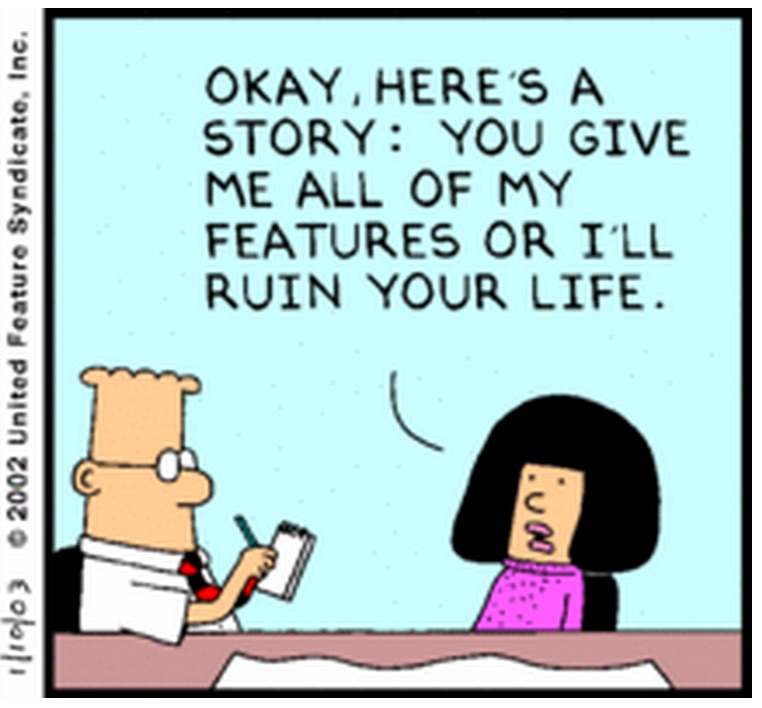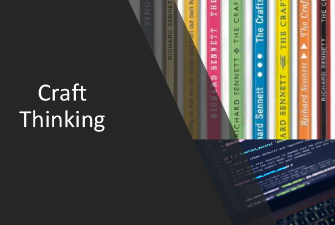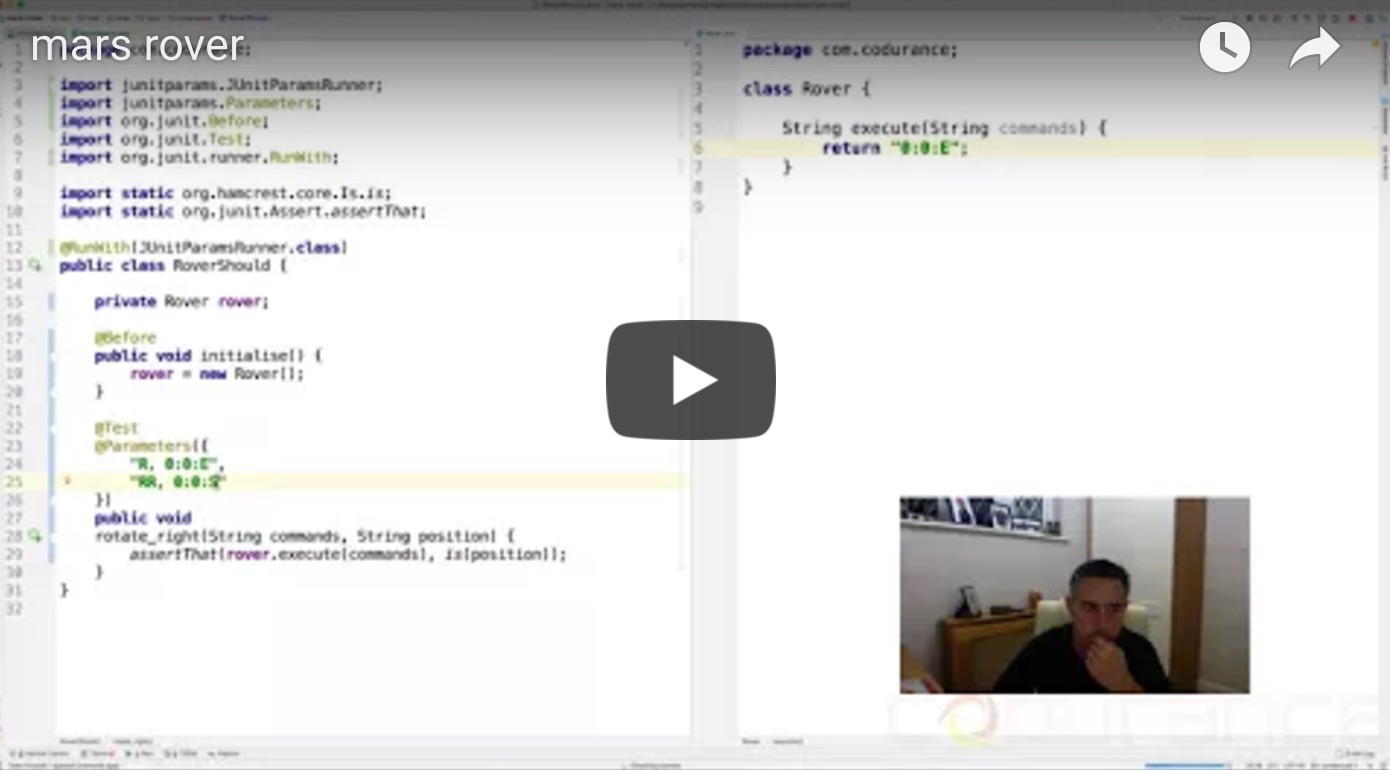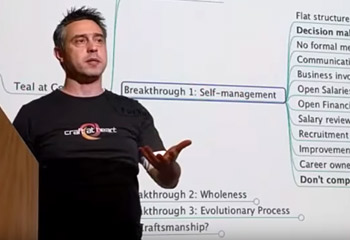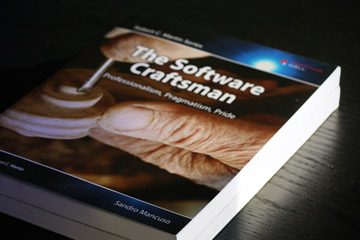- All /
- Posts/
- Videos/
- Newsletters
- By Samir Talwar
- Posted 17 Apr 2015
Design Patterns in the 21st Century: Conclusion
This is part five of my talk, Design Patterns in the 21st Century. Over the past week, we've seen three examples of design patterns that can be drastically improved by approaching them with a functional mindset. Together, these three span the spectrum. The Abstract Factory...
- By Samir Talwar
- Posted 16 Apr 2015
Design Patterns in the 21st Century: The Chain of Responsibility Pattern
Here's a thing you might not see a lot. @Test public void hungryHungryPatrons() { KitchenStaff alice = new PieChef(); KitchenStaff bob = new DollopDistributor(); KitchenStaff carol = new CutleryAdder(); KitchenStaff dan = new Server(); alice.setNext(bob); bob.setNext(carol); carol.setNext(dan); Patron patron = new Patron(); alice.prepare(new Pie()).forPatron(patron); assertThat(patron,...
- By Samir Talwar
- Posted 15 Apr 2015
Design Patterns in the 21st Century: The Adapter Pattern
This is part three of my talk, Design Patterns in the 21st Century. The Adapter pattern bridges worlds. In one world, we have an interface for a concept; in another world, we have a different interface. These two interfaces serve different purposes, but sometimes we...
- By Toby Retallick
- Posted 15 Apr 2015
Making Sense of Docker Volumes
Docker is a platform that allows users to build, ship, and run distributed applications. Applications are stored inside docker containers. A docker container uses a Union File System which consists of read-only layers and a read / write layer on top. Whilst the container is...
- By Samir Talwar
- Posted 14 Apr 2015
Design Patterns in the 21st Century: The Abstract Factory Pattern
This is part two of my talk, Design Patterns in the 21st Century. This pattern is used everywhere in Java code, especially in more "enterprisey" code bases. It involves an interface and an implementation. The interface looks something like this: public interface Bakery { Pastry...
- By Samir Talwar
- Posted 13 Apr 2015
Design Patterns in the 21st Century, Part One
I've been having a bit of trouble blogging recently. In an effort to get back into it, I thought I'd take a talk that I presented at JAX London last year, split it up into blog-sized posts as it's pretty long, and post them all...
- By Felipe Fernández
- Posted 29 Mar 2015
Dangerous Words
Ludwig Wittgenstein was one the greatest philosophers of 20th century. His book Tractatus Logico-Philosophicus addresses the limits of language and its relationship with reality. A friend of mine, great polemicist, suggested me to read it some years ago to understand one of his favourites conversational...
- By Pedro Santos
- Posted 23 Mar 2015
Multiple projects in Visual Studio solutions considered harmful
Multiple projects in Visual Studio solutions considered harmful I agree with Chad Myers when he defines a common project anti-pattern “Many projects in a Visual Studio Solution”. Fast feedback loop Too many projects increase both the load and build time of your solution. Also a...
- By Mashooq Badar
- Posted 23 Mar 2015
Project Sizing
Sizing a project is one of the most important things we do and it is often the first thing we need precisely when we have the least amount of information. During a pre-sales meeting the client will usually ask for a "ballpark" figure so that...
- By Sandro Mancuso
- Posted 20 Mar 2015
User Story Guidelines
Disclaimer: This post was extracted from an internal Codurance document used to help our apprentices to learn how we work. We all understand that each project is different and that by no means we can apply exactly the same techniques and practices everywhere. However, the...
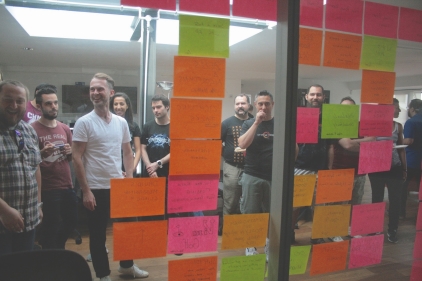
We're hiring!
Enjoying this article?

Software is our passion.
We are software craftspeople. We build well-crafted software for our clients, we help developers to get better at their craft through training, coaching and mentoring, and we help companies get better at delivering software.
Latest Blogs
One Year of Codurance Barcelona...
Functions
Useful Links
Contact Us
London EC1V 0JR
Phone: +44 207 4902967
Carrer Aragó, 208
08011, Barcelona
Phone: +34 689 723 737
Email: hello@codurance.com









